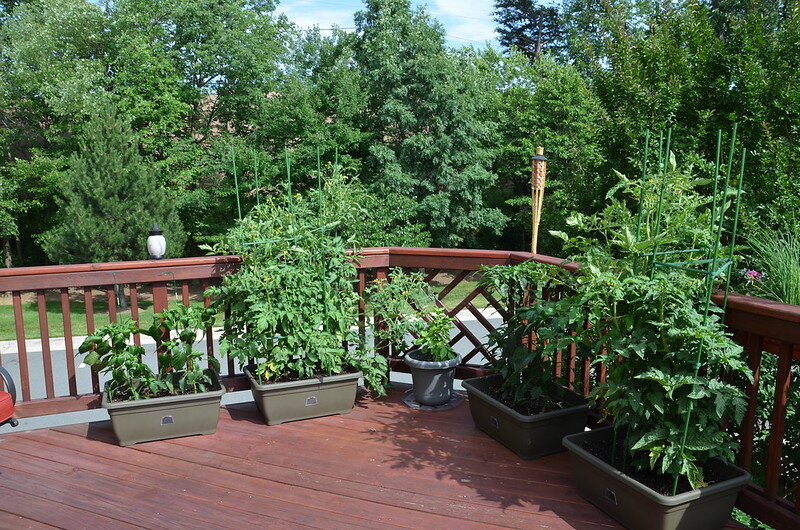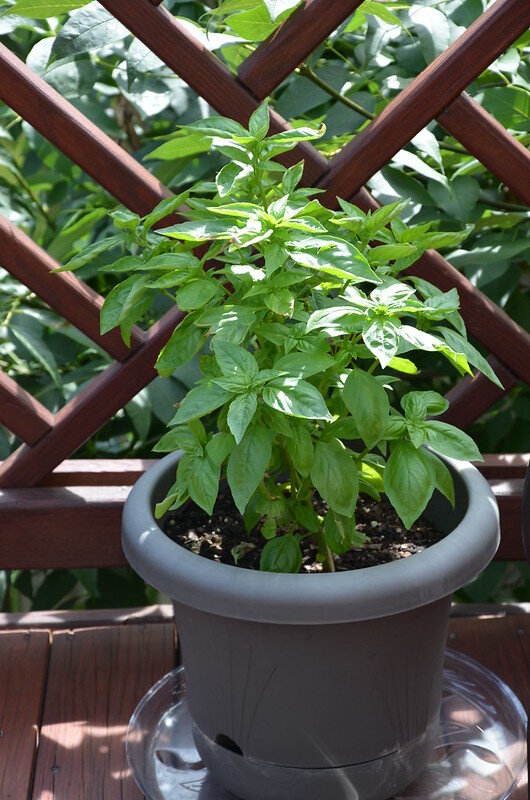by Mark Levisay
What do you do if you want to grow vegetables (or flowers for that matter) and you don’t have a yard to garden in? If you have any sunny spot outside your home, you can grow a lot of different kinds of vegetables in containers. Just as with garden beds, having lots of sun is key, as most vegetables simply won’t thrive in the shade.
Drainage is key
Almost any kind of container will work as long as it has drainage holes at the bottom. The water must be able to readily drain out of the pot, and not sit in the bottom. Plant roots want to be moist but not swimming in water, as they also need air to live. Pot size will vary depending on the space you have and the types of plants you want to grow. Obviously a tomato or pepper plant will need a larger pot than a couple of heads of lettuce or a few herbs.
Larger pots are usually better, as you may need to water them less often. One drawback of the larger pots is their depth which seems to increase faster than the diameter. Most plant roots will only live in the top 8-10” of soil so the bottom of the pot is not really needed. Many people use some kind of filler that doesn’t hold water and allows drainage, so your potting soil only fills the top half of the pot. Collapsed plastic plant pots, closed cell Styrofoam, or just bark mulch will all work. Rocks would work fine but the pot will be really heavy if you have to move it!
Railings can provide added support for tomatoes growing in containers.
What should I plant?
Determinate tomatoes (they only get to a certain size) or peppers are good candidates if you have large pots. Herbs work really well, and several varieties could be grown together in a large pot. Basil tends to get pretty big by late summer, so you’ll probably need a pretty big pot for that. Lettuce and spinach can work in smaller pots if you keep the number of plants low. Cucumbers should work well if you have some kind of trellis for the vines to climb on.
Planting and caring for your container crops
Planting is pretty much the same as it would be in a garden bed. After checking your drainage holes (you may need to drill these out in plastic pots or add more to what’s already there) fill the bottom half (of large pots) with some kind of filler. Add your potting soil, plant the seedlings or seeds, and water thoroughly. Mulch is often helpful for retaining moisture. Commercial potting soil usually contains a slow release fertilizer, so you’re good to go for 4-6 weeks before you need to add more. A water soluble fertilizer like Miracle Gro or slow release pellets like Osmocote will work well. Water frequently and thoroughly-you should see some water run out of the bottom of the pot.
Unless your pots are sitting on gravel, they should be up off the surface of your patio or deck by at least an inch. There are all kinds of plant stands of varying height which will do the trick. We even found a plastic product called Pot “Toes” on Amazon-use 3 or 4 per pot to raise the pot. This promotes drainage and allows the surface (wood, concrete or tile) to dry out between waterings. In our warmest summer weather you may need to water almost every day, as the entire pot will be over 90 degrees and evaporation will be rapid.
With plenty of sun, basil grows well in containers.
At the end of the growing season you have two choice of what to do with your pot. You can pull out your spent plants and save the pots full of soil for next year. This works well if you’ve planted perennial flowers, as many will over-winter. You’ll just need to add fertilizer at the beginning of the next growing season, as the original fertilizer will be depleted. The other procedure is to remove the soil and filler from the pot completely. The used potting soil will make a good addition to traditional garden beds if you have them. Rinse your pots with water to remove soil and plant debris, and then disinfect the pots with a water and bleach solution mixed 10 parts water to 1 part bleach. This should kill any fungal spores or harmful bacterial that may have accumulated during the growing season. Store the pots somewhere dry and they’re ready to start all over next spring. You’ll get many years of use out of good quality pots, so why not give it a try?
Have a garden question? Send me an email at marklevisay@gmail.com.

